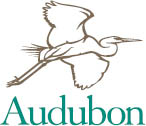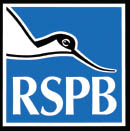

In the enduring words of one time Director of the New York Zoological Park – William Temple Hornaday, the American zoologist and naturalist who wrote in his 1913 book – Our Vanishing Wildlife:
We are weary of witnessing the greed, selfishness and cruelty of ‘civilised’ man toward the wild creatures of the earth. We are sick of the slaughter and pictures of carnage. It is time for sweeping reformation and that is precisely what we now demand.
With those sentiments to the fore and by way of conclusion, I am pleased to include the following direct contributions from both the RSPB here in the UK and the National Audubon Society of America which, in their own words, give the reader a brief insight into the early years of these organisations and reminds us all that both we and the birds are lucky to have them. Without them, the world would be a poorer place and with the sentiments of Hornaday in mind, we should be enduringly grateful for their work.

THE AUDUBON SOCIETY OF AMERICA
Just in Time
A little over 100 years ago, the conservation movement took flight… and not a minute too soon. By 1900, Americans’ belief that our continent’s wildlife was inexhaustible, had led to serious consequences. Bison no longer roamed the Great Plains, and Passenger Pigeons that had once darkened the skies for miles as they passed overhead – had been exterminated. Many other species were on the brink. Overhunting and habitat destruction were key factors. But in the case of birds something else was also at work. A new fashion had swept the nation – bird hats were all the rage.
One day while walking in Manhattan, Frank Chapman – publisher of Bird Lore magazine – counted: 542 people wearing hats adorned with either entire birds or their plumage – representing a total of forty-two bird species. Egrets, in particular, were so highly prized that their feathers were worth twice their weight in gold. No wonder that plume hunters were slaughtering them. But through the bold efforts of some farsighted Americans, these magnificent creatures and many more were saved … just in time. It was these men and women who founded one of America’s longest-lived and most successful conservation organizations – the National Audubon Society.
The story of Audubon begins a few years earlier, in 1886 when New York publisher, George Bird Grinnell, invited readers of his Forest & Stream magazine to sign a pledge that they would not harm birds. He named this eager group the Audubon Society for the Protection of Birds, named after the famed bird and wildlife artist, John James Audubon. But response was so great he couldn’t keep up and reluctantly had to fold the organization. A decade later, Harriet Hemenway used her home in Boston as the gathering spot for friends who vowed to stop the continued destruction of wildlife. These women started a grassroots movement that quickly became the Massachusetts Audubon Society.
From there, Audubon Societies sprang up across the country. Finally, on 5 January 1905 in New York City, leaders from thirty-one state organizations formed the National Association of Audubon Societies for the Protection of Wild Birds and Animals, later to be named the National Audubon Society. Prominent ornithologist William Dutcher served as its first president.
A Deadly Battle
Early bird conservation meant waging battles on two fronts. On one, influential citizens persuaded their friends not to create demand for bird plumes … on the supply front, the struggle turned deadly. In Florida – the epicenter of the plumage trade – Audubon hired wardens to protect vital bird nesting sites. Guy Bradley was one of these wardens. He himself had been a plume hunter, but had come to believe the decimation had to stop. On confronting a poacher he knew, Bradley was shot and killed, and left to drift in his boat. Over the next three years, two more Audubon wardens would be shot and killed in the line of duty. Their deaths became the rallying cry for conservationists across the country.
Friends in High Places
One of them was President Theodore Roosevelt. An ardent conservationist and ornithologist, Roosevelt understood that natural areas and wildlife were in serious danger unless protected. And so he created the nation’s first wildlife refuge – Florida’s Pelican Island – in 1903, followed by five of our National Parks, fifty-one Bird Preserves and 150 National Forests. Roosevelt became known fittingly as the ‘conservation President’. He also became an Honorary Vice President of the Audubon Society, which was in turn, motivated by his passion, and his pragmatism.
Audubon’s Mission
‘To conserve and restore natural ecosystems. Focusing on birds, other wildlife and their habitats for the benefit of humanity and the earth’s biological diversity.’

THE ROYAL SOCIETY FOR THE PROTECTION OF BIRDS
United Kingdom
On a wing and a prayer...
The RSPB was formed to counter the barbarous trade in plumes for women’s hats, a fashion responsible for the destruction of many thousands of egrets, birds of paradise and other species whose plumes had become fashionable in the late Victorian era.
There had already been concern earlier in the century about the wholesale destruction of such native birds as great crested grebes and kittiwakes for their plumage, leading to such early legislation as the Sea Birds Preservation Act of 1869 and the Wild Birds Protection Act of 1880, but the trigger which led to the foundation of the Society for the Protection of Birds in 1889 was the continued wearing of ever more exotic plumes.
In its earliest days the Society consisted entirely of women who were moved by the emotional appeal of the plight of young birds left to starve in the nest after their parents had been shot for their plumes. Ironically, some of the Society’s staunchest supporters were those from the upper classes who would have been the most lightly to have worn feathers.
The rules of the Society were very simple and a number of influential figures, including the leading ornithologist of the day, Professor Alfred Newton lent their support to the cause, which gained widespread publicity and popularity, leading to a rapid growth in the Society’s membership and a widening of its aims.
Indeed the young Society was so successful that it was granted its Royal Charter in 1904, just fifteen years after being founded.
The RSPB Today
The RSPB speaks out for birds and wildlife, tackling the problems that threaten our environment.
We are the largest wildlife conservation organisation in Europe with over one million members. Wildlife and the environment face many threats. Our work is focused on the species and habitats that are in the greatest danger.
Our work is driven by the passionate belief that:
• Birds and wildlife enrich people’s lives.
• The health of bird populations is indicative of the health of the planet, on which the future of the human race depends.
• We all have a responsibility to protect wildlife.
We have more than one million members, over 18,000 volunteers, 1,300 staff, more than 200 nature reserves, nine regional offices, a UK headquarters, three national offices... and one vision – to work for a better environment rich in birds and wildlife.
The RSPB speaks out for birds and wildlife, tackling the problems that threaten our environment. Nature is amazing – help us keep it that way.
BIRDLIFE INTERNATIONAL
The world’s largest civil society Partnership for nature.
In the darkest days of the later Victorian and subsequent Edwardian periods, the carnage visited upon the world’s bird populations, simply to garner their feathers for the international fashion industry, was nothing short of nightmare proportions. Happily, things, in the early twenty-first century have fortunately moved on for the better.
Today, as the world’s leading global, non-profit making conservation partnership, BirdLife International has more than 13 million members and supporters. This comprises some 2.77 million actual members and a further 10.8 million non member supporters. BirdLife Partner organisations work with over 7,000 local groups including 2,750 Important Bird and Biodiversity Areas including 2.7 million children.
At the start of 2015, BirdLife Partners manage or own 1553 protected areas covering 4.3 million hectares globally of natural areas and employs over 7,000 staff with a combined budget of $589 million. Working with many local communities, the organisation has been described as providing very cost effective action and ‘the best bang for buck in the conservation world’ with its work on bird conservation in which over 10,000 species are recognised.
The world’s oldest truly international conservation organisation
Post First World War, Bird Life’s mission ‘Was not different from what we have been doing before – namely to work for the conservation of the world’s biological diversity and the sustainability of human use of natural resources by focusing on a life-form group which, throughout the history of conservation, has shown itself to be of special importance in recognising and addressing problems affecting our living environment’.
The internationalisation of conservation activities in the form of organisations is essentially a post First World War development. The first international initiatives were taken in North America during the first decade of the twentieth century and in 1910, other attempts were made in Europe; but it was not before 1922 that the first truly international conservation organisation – the international Council for Bird preservation (ICBP) was created.
In May 1928, the ICBP held its first formal conference in Geneva, Switzerland. Resolutions were passed for ‘unofficial action’ on the creation of bird sanctuaries and the collection of large numbers of the eggs of rare species – (‘generally objectionable and unworthy of a good naturalist’). To take into account the diverse legislation and customs of different countries, the Committee felt the best chance of securing international agreement would be to confine its recommendations for official action to two definite proposals. One called for a ‘closed season’ on the shooting and trapping of birds on their spring migration and while breeding and the other for an international convention on oil pollution, ‘which should take into consideration the great loss of birds from this cause’.
Another concern was the mass destruction of birds of prey: not only were these birds not protected but many national and state governments offered bounties which resulted in the slaughter of tens of thousands of hawks and owls every year. The ICBP national sections set out to lobby their governments and raise awareness of the importance of raptors in the ‘balance of nature’ and as rodent controllers. Slowly, protection was introduced across Europe, though in some Mediterranean countries it was (and in a few cases still is) not enforced.
Therefore, with the nature of mankind being what it is, the job will probably never be totally complete but wonderful strides have been made since those sombre days of the Victorian and Edwardian periods. And for those who may be interested in contributing to the protection and enhancement of the world’s wildlife in the years to come, more information may be found on – www.birdlife.org